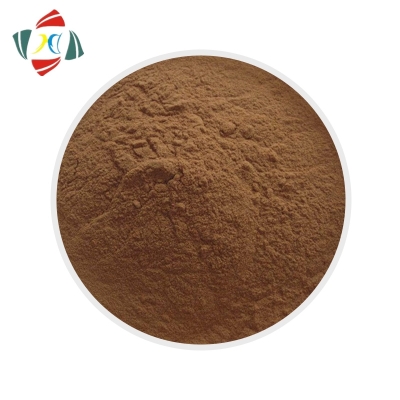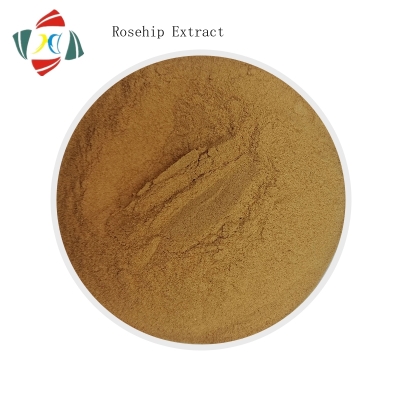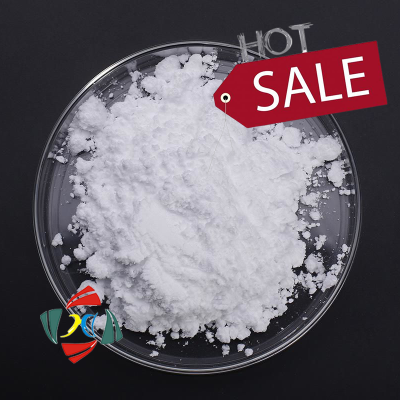-
Categories
-
Pharmaceutical Intermediates
-
Active Pharmaceutical Ingredients
-
Food Additives
- Industrial Coatings
- Agrochemicals
- Dyes and Pigments
- Surfactant
- Flavors and Fragrances
- Chemical Reagents
- Catalyst and Auxiliary
- Natural Products
- Inorganic Chemistry
-
Organic Chemistry
-
Biochemical Engineering
- Analytical Chemistry
- Cosmetic Ingredient
-
Pharmaceutical Intermediates
Promotion
ECHEMI Mall
Wholesale
Weekly Price
Exhibition
News
-
Trade Service
▎ WuXi AppTec content team editor
.
This article is for informational purposes only and the views expressed herein do not represent the position of WuXi AppTec, nor do they represent WuXi AppTec's support for or opposition to the views
expressed herein.
This article is also not recommended
for treatment options.
For guidance on treatment options, please visit a regular hospital
.
In recent years, the prevalence of hyperuricemia and gout in China has increased significantly, and the overall prevalence of hyperuricemia in China is 13.
Image credit: 123RF
Clinical phases of hyperuricemia/gout — 3 stages, 8 states
Hyperuricemia and gout are different states
The three stages are: preclinical stage, clinical stage, and course stage
The 8 states are: asymptomatic hyperuricemia, asymptomatic monosodium urate deposition, asymptomatic hyperuricemia with monosodium urate deposition, gout, gouty, gouty, erosive gout, first gout attack, recurrent gout attack
Disease status of hyperuricemia and gout (Image source: Reference[2])
Hyperuricemia/gout is classified according to the cause – primary and secondary
The main cause of primary hyperuricemia is hyperuric acid production, and the influencing factors include the intake of hyperpurine foods, excessive alcohol intake, high-sugar diet, and increased nucleic acid metabolism
Secondary hyperuricemia is generally caused
Disease factors:
(1) Hematologic diseases (such as acute and chronic leukemia, polycythemia, multiple myeloma, hemolytic anemia, lymphoma) and a variety of solid tumor chemotherapy, due to the large breakdown of cellular core acid and excessive uric acid production;
(2) Various types of kidney disease: increased blood uric acid due to decreased uric acid excretion due to renal insufficiency and tubular disease;
Potentially affecting drugs: such as diuretics, anti-tuberculosis drugs, antiparkinson's disease drugs, vitamin B12, immunosuppressants, etc
.
When should patients with asymptomatic hyperuricemia take medicine? What about the control goals?
It is recommended that patients with asymptomatic hyperuricemia initiate uric acid-lowering drugs when:
Blood uric acid level ≥ 540 μmol/L;
Blood uric acid levels ≥ 480 micromol/L and have one of the following comorbidities: hypertension, abnormal lipid metabolism, diabetes mellitus, obesity, stroke, coronary heart disease, cardiac insufficiency, uric acid nephrolithiasis, renal impairment (≥ CKD stage 2
).
The control objectives are: in patients without comorbidities, it is recommended to control blood uric acid at <420 μmol/L; In the presence of comorbidities, it is recommended to control it at <360 μmol/L<b10>.
When do patients with gout need uric acid-lowering therapy? What about the control goals?
It is recommended that patients with gout initiate uric acid-lowering drugs when:Blood uric acid ≥480 μmol/L;
Blood uric acid ≥ 420 micromol/L with any of the following: gout attacks ≥2 times/year, tophi, chronic gouty arthritis, kidney stones, chronic kidney disease, hypertension, diabetes mellitus, dyslipidemia, stroke, ischemic heart disease, heart failure, and age of onset < 40 years<b10>.
It is recommended that patients with gout control blood uric acid < 360 μmol/L, and when one of the above conditions is combined, the blood uric acid level < 300 μmol/L; Long-term control of blood uric acid at <180 μmol/L<b10> is not recommended.
Image credit: 123RF
Patients with hyperuricemia/gout should be reasonably selected with uric acid-lowering drugs
Allopurinol, febuximata, or benzbromomarone are recommended as first-line agents for uric acid-lowering therapy in patients with gout;
Allopurinol or benzbromomarone is recommended as first-line treatments for uric acid-lowering in asymptomatic patients with hyperuricemia;
Patients with single-agent adequate amount and full course of treatment, and the blood uric acid is still not up to standard, the combined application of two different mechanisms of action of uric acid lowering drugs
may be considered.
When selecting uric acid-lowering drugs, the indications for the drug, contraindications, and the classification
of hyperuricemia should be considered in combination.
Drugs that inhibit uric acid synthesis: the representative drugs are allopurinol and febustad.
Uric acid excretion drugs: the representative drug is benzbromomarone
.
1) Allopurinol is the first xanthine oxidase inhibitor for patients with hyperuricemia and gout, which has a good uric acid-lowering effect, especially for patients
with polyuretic acid production.
2) Febuxta is a specific xanthine oxidase inhibitor with good uric acid-lowering effect, especially for patients
with chronic renal insufficiency.
3) Phenylbromarone inhibits tubular uric acid reabsorption by inhibiting the proximal tubular urate transporter 1 (URAT-1) to promote uric acid excretion, especially for patients
with hyperuricemia and gout with reduced renal uric acid excretion.
Image credit: 123RF
Anti-inflammatory and analgesic treatment during acute onset of gout
During the acute onset of gout, it is recommended to use small doses of colchicine or NSAIDs (adequate and short courses, including etocoxib, diclofenac sodium, meloxicam, etc.
) as soon as possible, and for patients who are intolerant to the above drugs, ineffective or contraindicated, systemic glucocorticoids are recommended;In patients with acute onset of gout involving multiple joints, large joints, or with constitutional symptoms, systemic glucocorticoid therapy is recommended;
Patients with a pain visual simulation score (VAS) score of ≥7, or ≥ 2 large joints involved, or polyarthritis, or one drug with poor efficacy, a combination of two anti-inflammatory analgesics, such as a small dose of colchicine with NSAIDs or a small dose of colchicine in combination with systemic glucocorticoids
, is recommended.
If hyperuricemia is associated with other diseases in patients with gout, how to choose related drugs?
Hypertension is the first comorbidity
of hyperuricemia and gout.
In patients with hyperuricemia and gout, 47.
2% to 77.
7% had hypertension
.
When patients with hyperuricemia/gout have hypertension, hypotensive agents that do not affect or reduce blood uric acid levels should be preferred, such as losartan and nifedipine
.
Kidney damage is the second most common comorbidity of hyperuricemia and gout
.
In patients with hyperuricemia and gout combined with chronic kidney disease, it is recommended to individually select uric acid-lowering drugs and doses according to the stage of chronic kidney disease; It is recommended that when the glomerular filtration rate (eGFR) < 30 mL/min/1.
73<b12>m2, uric acid-lowering drugs are given priority to febuxex.
Diabetes mellitus is one
of the common complications in patients with hyperuricemia and gout.
In the case of hyperuricemia and gout combined with diabetes mellitus, it is recommended to give preference to hypoglycemic drugs that also have a uric acid-lowering effect, and to select drugs
that have no adverse effect on blood uric acid levels.
At present, it has been clearly defined that the hypoglycemic drugs with uric acid are mainly α-glycosidase inhibitors, insulin sensitizers, dipeptide peptidase 4 (DPP-4) inhibitors, sodium-glucose synergistic transporter 2 (SGLT-2) inhibitors
and metformin.
In addition, drugs that do not affect the level of blood uric acid are the glucagon-like peptide 1 (GLP-1) receptor agonists liraglutide and isenautide
.
In concomitant hypertriglyceridemia, fenofibrate
is recommended as the preferred treatment for lipid-lowering therapy.
In concomitant hypercholesterolemia, atorvastatin calcium
is recommended for lipid-modulating drugs.
Hyperuricemia and gout are often combined with hypertension, lipid metabolism disorders, and diabetes mellitus, and these diseases affect each other and cause and effect
each other.
Therefore, it is necessary to adhere to the principle of "comprehensive treatment", choose drugs that have both uric acid-lowering effects, and avoid uric acid-raising drugs
.
In general, hyperuricemia and gout are associated with the development of a variety of chronic diseases
.
Choosing the right time for treatment and carrying out standardized treatment is very important
for the management of the disease.
Related Reading
The latest ten recommendations for lowering uric acid and preventing gout: 4 types of dietary taboos, 3 types of recommended foods, 3 daily rules!
Fudan Gao Xiang Professor interpretation: Accident! Chinese often eat this kind of food will actually increase uric acid, anti-gout can be eaten like this
Lancet sub-journal: How much uric acid is controlled to reduce gout attacks? This study gives the answer
Resources
Chinese Medical Association Endocrinology Branch.
Guidelines for the Diagnosis and Treatment of Hyperuricemia and Gout in China (2019)[J].
Chinese Journal of Endocrinology and Metabolism, 2020, 36(1): 1-13.
Huang Y F, Yang X H, Chen Shu H, et al.
Practice guide for patients with hyperuricemia/gout[J].
Chin J Internal Medicine, 2020, 59(7): 519-527.
Chinese Medical Association, Journal of Chinese Medical Association, General Medicine Branch of Chinese Medical Association, et al.
Guidelines for primary diagnosis and treatment of gout and hyperuricemia (2019)[J].
Chin JPh, 2020, 19(4): 293-303.
.
This article is for informational purposes only and the views expressed herein do not represent the position of WuXi AppTec, nor do they represent WuXi AppTec's support for or opposition to the views
expressed herein.
This article is also not recommended
for treatment options.
For guidance on treatment options, please visit a regular hospital
.







